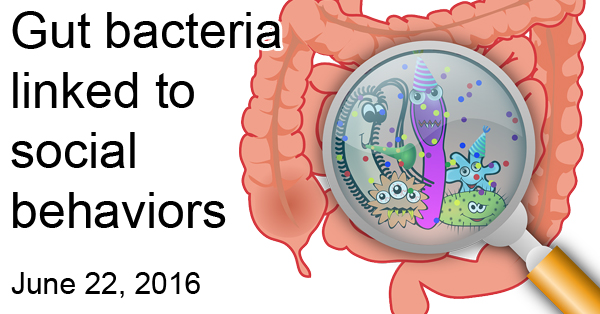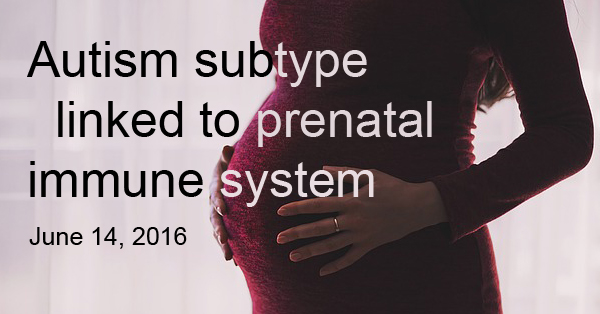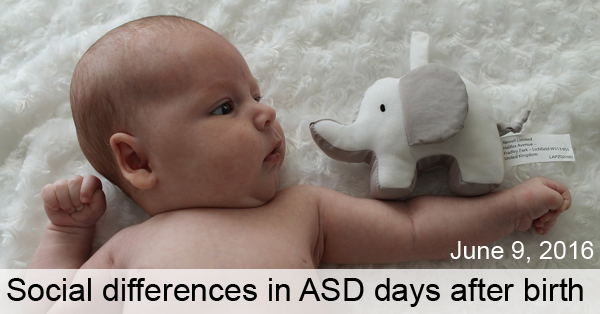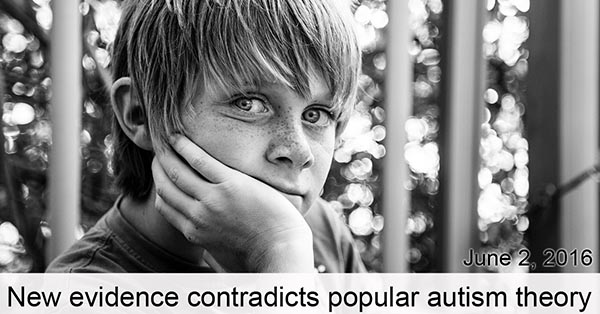Archives
June, 2016
Select a different month in the archive
Mom’s Obesity May Up ASD Risk Due to Gut Bacteria
By Shana R. Spindler, PhD on June 22, 2016

Background: Previous research has found an association between maternal obesity and an increased risk of autism spectrum disorder (ASD). A key question is how a mother’s obesity could affect her child’s risk of the disorder. By using animal models, researchers can study what factors are important for the association between maternal obesity and ASD.
What’s new: On June 16, 2016, the journal Cell published a study examining the link between obesity and autism risk using mice. Researchers put mice on a high-fat diet (or normal diet for controls) and studied the resulting pups’ behaviors. As expected, the pups in the high-fat group lacked several social behaviors typical to mice. The researchers found that a decreased diversity of gut bacteria due to high-fat diet affected the pup’s brain’s response to oxytocin, a chemical involved in social bonding. In a series of experiments, the researchers showed that exposure to gut bacteria from mice on normal diets helped the pups born to obese mice establish normal social behaviors.
Why it’s important: For the first time, researchers showed that increased autism risk from maternal obesity might be due to differences in gut bacteria, at least in mice. This study adds to the growing body of evidence that the health of your gut affects the workings of your brain, and part of a healthy gut includes a diverse community of beneficial bacteria. With additional research, the relative safety and availability of probiotics makes gut health an attractive target for autism therapy, or maybe even prevention.
Help me understand :
| Source(s) : |
| Tweet |
Prenatal Immune System Proteins in Mom linked to ASD
By Chelsea E. Toledo, M.A. on June 14, 2016

Background: Autism Spectrum Disorder (ASD) is characterized by social, behavioral and communicative differences and can be accompanied by intellectual disability. While genetics appear to play a strong role in the risk of having an ASD diagnosis, research has suggested that environmental factors – such as mothers’ immune activity during pregnancy – could factor into that risk, as well.
What’s New: On May 24, 2016, the journal Molecular Psychiatry published a study examining the relationship between a mother’s immune system biomarkers during pregnancy and children’s likelihood of having ASD. The researchers focused on mothers who had given blood samples as part of a public health study focused on early ASD indicators while pregnant, with a total of 1031 resulting children. In this group, 415 later received an ASD diagnosis, 188 had developmental delay without ASD, and 428 had typical development. The researchers further divided the ASD group into those with and without an accompanying intellectual disability and found that the mothers of the 184 children with both ASD and intellectual disability had higher levels of multiple immune-related proteins midway through the pregnancies than the mothers of children from all the other groups.
Why it’s important: The trends observed in proteins in expectant mothers’ blood proteins suggests that inflammation – the result of an immune response – may play a key role in the development of ASD with intellectual disability. Furthermore, these differences may help researchers to better understand sub-types of ASD.
Help me understand :
| Source(s) : |
| Tweet |
Newborns at Risk for Autism Differ in Social Preferences
By Shana R. Spindler, Ph.D. on June 9, 2016

Background: Newborn babies pay close attention to relevant social cues, such as a mother’s face. Some researchers hypothesize that the social preferences typically seen in infancy are impaired in autism, leading to an underdevelopment of “social brain” networks.
What’s new: On May 20, 2016, Scientific Reports published a study that examined social preferences in newborns at high risk for autism. The researchers showed social and non-social images to 13 newborns with high risk of autism and 16 newborns with low risk of autism—all between 6 and 10 days old. Researchers scored each newborn on how much he or she looked at the social versus non-social images. According to the report, the newborns at high risk for autism looked significantly more at the non-social images than the low-risk infants did.
Why it’s important: This is the first study to show that babies at high risk for autism show diminished social attention as early as 6 days after birth. Future research could include a larger number of infants and follow up to see if the high-risk infants receive an Autism Spectrum Disorder diagnosis.
Help me understand :
| Source(s) : |
| Tweet |
New Evidence Contradicts Popular Autism Theory
By Anjali Sarkar, PhD on June 2, 2016

Background: In neuroscience, a “simple task” involves activity in one or a few brain regions while a “complex task” involves the coordination of multiple regions in the brain. According to some neuroscientists, autism is marked by superior simple task performance but poor complex task performance.
This observation has led to a theory that diverse areas of brain activity fail to function as a whole in Autism Spectrum Disorder (ASD), leading to the social and behavioral symptoms common to the disorder. A specialized version of this theory focuses on problems with multisensory integration, how the brain combines information from all five senses. For example, when children with ASD are around noisy distractions, they tend to perform poorly on tasks that require attention, according to previous research.
What’s new: A recent study shows that children with ASD have intact multisensory integration. The researchers found that high-functioning adolescents with ASD performed as well as typical adolescents on multisensory tasks that combined visual sensory inputs from the eye and balance sensory inputs from the inner ear.
Why it’s important: The results of this study contradict the popular notions of defective multisensory integration in individuals with ASD. Instead, the study reveals an increased sensitivity to sensory inputs, likely due to problems with lesser understanding of the world. Because participants of this study are from the high-functioning end of the autism spectrum, future studies could test if children across the spectrum have proper multisensory integration.
Help me understand :
| Source(s) : |
| Tweet |

